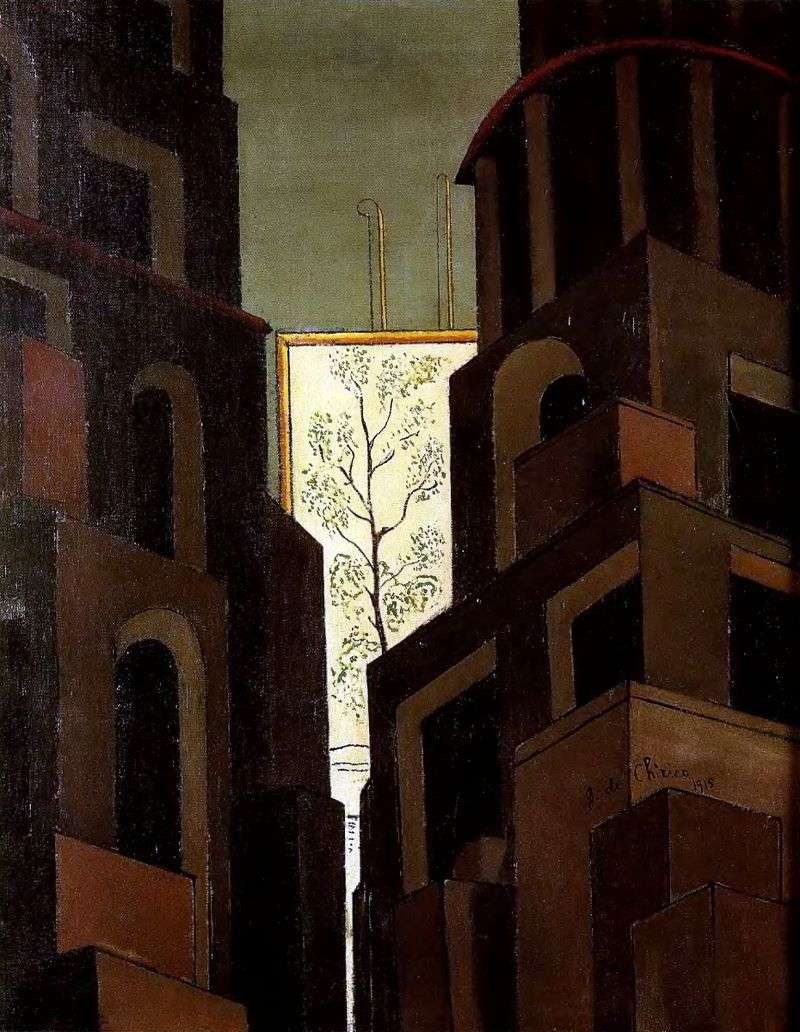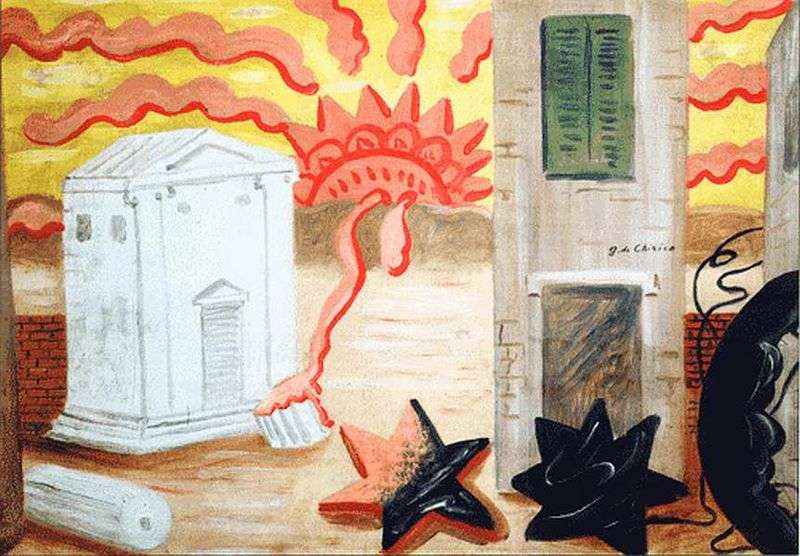
The fact that the surrealists declared de Chirico to be their forerunner is quite logical. His “dream” paintings are very close to surrealism. At the same time the works of de Chirico of the 1920s testify to the reverse effect.
At the same time, the “corporate” style of the artist, whose indexes are the “picture in the picture,” and deliberate optical illusions, and distortions of scale, and faceless mannequins, are always recognizable. At the end of his life, de Chirico will only introduce an ironic element into the current system. A typical example of this irony is the picture “Return of Ulysses”.
 The Prodigal Son by Giorgio de Chirico
The Prodigal Son by Giorgio de Chirico Red Tower by Giorgio de Chirico
Red Tower by Giorgio de Chirico Purity of the imagination by Giorgio de Chirico
Purity of the imagination by Giorgio de Chirico The Rising Sun by Giorgio de Chirico
The Rising Sun by Giorgio de Chirico Walk of the philosopher by Giorgio de Chirico
Walk of the philosopher by Giorgio de Chirico Portrait of Guillaume Apollinaire by Giorgio de Chirico
Portrait of Guillaume Apollinaire by Giorgio de Chirico Metaphysical interior by Giorgio de Chirico
Metaphysical interior by Giorgio de Chirico Tower by Giorgio de Chirico
Tower by Giorgio de Chirico